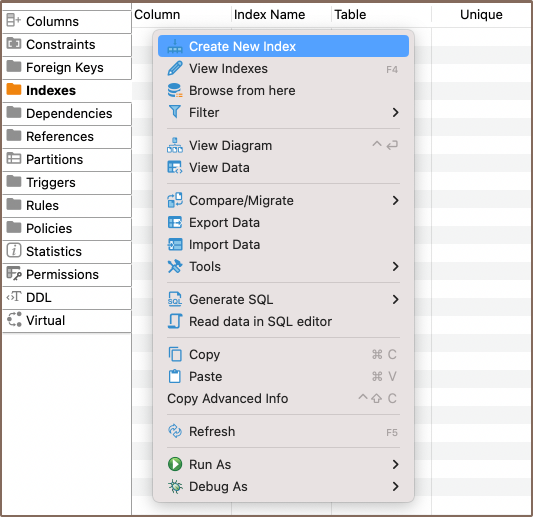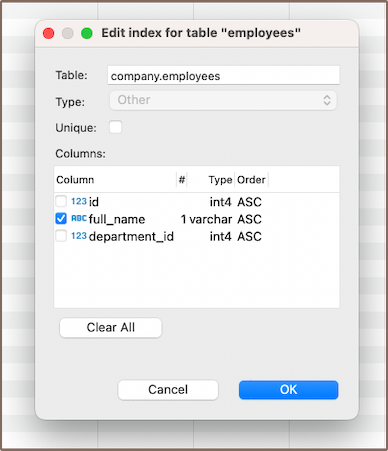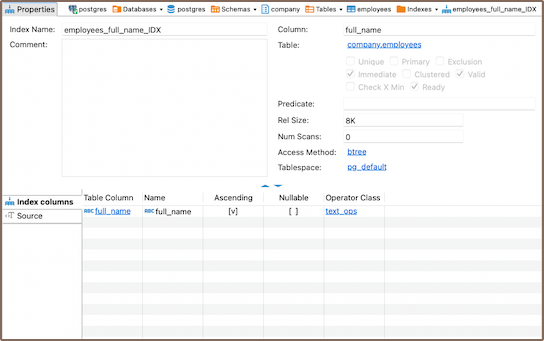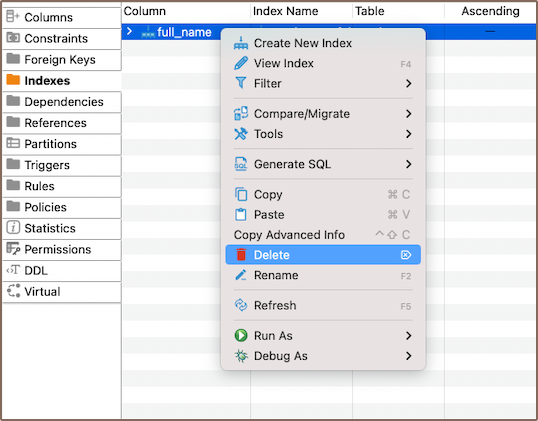Indexes
Create
- To create an index, navigate to the corresponding table. Click on the Indexes tab. Right-click and select Create New Index.

- Choose the column for the index and click OK.

Note You have the option to create a composite index, which is an index built on several table columns. It boosts query execution speed when dealing with multiple-column conditions. A composite index can greatly improve database performance with complex conditions. It's recommended to put unique fields at the end of the composite index.
- Persist the changes.
Modify
To modify indexes, double-click the index name to view its parameters.

Remember, the ability to alter index parameters depends on the DBMS type. Changing these parameters may slow down query performance. Always test performance implications before making changes to a production server.
Delete
To delete an index, right-click on the index's name in the Properties editor and select Delete, or you can select the necessary column and press the Delete key.

Restrictions
- Unique indexes created due to a primary key or unique constraint can't be deleted. Instead, remove the constraint. This action removes the uniqueness requirement for column values involved in the constraint expression and deletes the corresponding unique index.
- Unique Indexes: These enforce uniqueness on the indexed column(s.md), which can limit data entry if values must be distinct.
- Performance Impact: Indexes can improve query speed, but they slow down data modification operations (INSERT, UPDATE, DELETE) as the index must also be updated.
- Storage: Indexes consume disk space. This might become significant if there are many indexes or the table is large.
- Null Values: Depending on the database system, there may be restrictions related to indexing null values.
- Data Types: Certain data types might not be indexable or may require specific index types.
Always consider these factors when creating indexes to ensure optimal database performance and efficiency.

